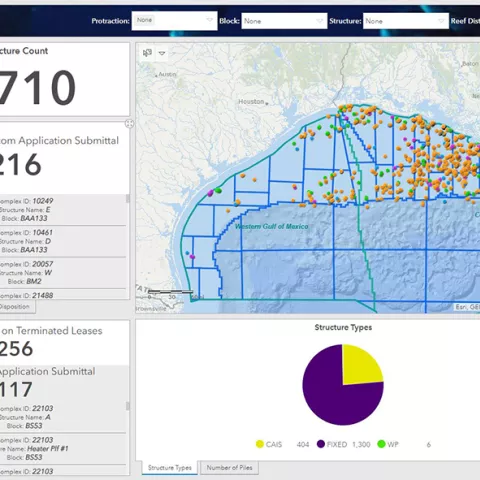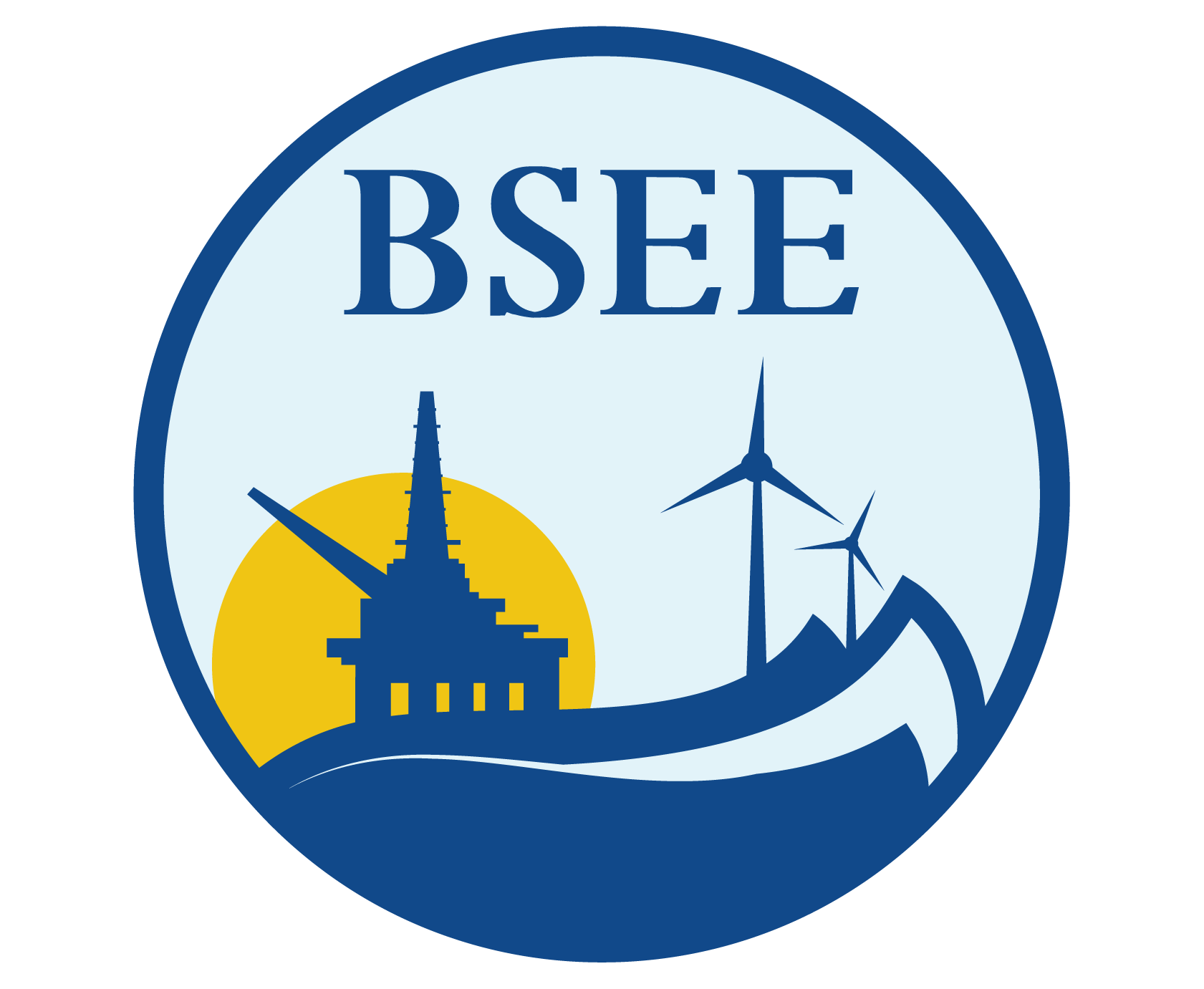
WASHINGTON – Increasing transparency through collaboration and data dissemination, the Bureau of Safety and Environmental Enforcement (BSEE) recently developed a web-based, state-of-the-art Offshore Infrastructure Dashboard (OID) for sharing critical data with stakeholders who have diverse interests in the Gulf of Mexico. The innovative, highly informative OID provides a single online location for Federal and State partners along with non-governmental organizations and the public to access information on Gulf of Mexico oil and gas platforms and infrastructure eligible for the Rigs-to-Reefs program.
“The dashboard makes retrieving facility data easier for everyone with an interest in the Gulf of Mexico,” said BSEE Director Scott Angelle. “Although the information was always available on BSEE.gov, it was challenging to access and understand it.”
“The Bureau of Safety and Environmental Enforcement’s new Offshore Infrastructure Dashboard is a helpful addition to Louisiana’s effort to create offshore artificial reefs,” said Mike McDonough, Louisiana Department of Wildlife & Fisheries Artificial Reef Coordinator. “The amount of information provided, and the ease of use is a credit to the BSEE staff who developed (the dashboard).”
Over the last decade, approximately 200 platforms were decommissioned annually in the Gulf of Mexico. This trend is expected to continue. BSEE developed the OID to increase engagement with Federal and State partners, facility owners, Outer Continental Shelf (OCS) user groups, and coastal communities. This dashboard ensures that information is available to everyone with an interest in the Gulf of Mexico.
“The dashboard will provide a unique resource that will facilitate the identification of oil/gas infrastructure that has reached the end of its usable life and are candidates to be included in Alabama’s Rigs to Reefs Program,” said Craig Newton, Alabama Department of Conservation and Natural Resources Artificial Reef Coordinator.
“CCA would like to thank Director Angelle and his team at BSEE for creating this powerful tool that can be used to enhance Gulf fisheries habitat,” said David Cresson, Executive Director of Coastal Conservation Association of Louisiana. “The required removal of structures has been a concern to anglers for many years, and we appreciate the agency working with us to find common-sense solutions. Giving states, operators, and anglers more opportunities to explore reefing instead of total removal is a win-win for all involved, most importantly, the marine species who call these structures their home.”
“We have witnessed an unprecedented loss of reef fish habitat in the Gulf of Mexico,” said Congressman Garret Graves. “This dashboard will deliver long-term sustainable wins for the Gulf ecosystem, those that love to fish and the tourism economy. BSEE is utilizing technology and common sense to get ahead and identify artificial reef habitat to promote conservation, access, and drive our local economies. This is a common-sense, 21st Century solution, and I look forward to seeing Louisiana and the other Gulf States take advantage of the dividends it will provide.”
The Gulf of Mexico, historically a tremendous fisheries producer, contributes millions of dollars to the economy every year. With some research suggesting that more than half of Gulf of Mexico recreational fishing is directly related to offshore oil and natural gas structures, the OID provides necessary data, charting the number and location of offshore energy facilities as they currently exist, to ensure holistic decision making before structures are decommissioned.
With approximately 15% of all U.S. oil production also coming from the Gulf of Mexico, American jobs and coastal economies are directly linked to offshore facilities. “Finding ways to enable the coexistence of these diverse groups is important,” said Angelle. “This dashboard delivers critical information regarding structures that can be used to benefit marine life and the economies of states and coastal communities.
The Offshore Infrastructure Dashboard (OID) is an invaluable tool that enhances how BSEE shares critical information relating to the Rigs-to-Reefs program and OCS Facilities.
-BSEE-
Under the Trump Administration, BSEE staff implemented about 85 new environmental initiatives to equip itself with strong, durable processes and programs, ranging from environmental compliance verification methods to improved regulations. Through leadership, innovation and collaboration, BSEE continues to develop environmental initiatives and smart solutions that supports energy production and maintaining critical marine habitat to benefit all Americans.
